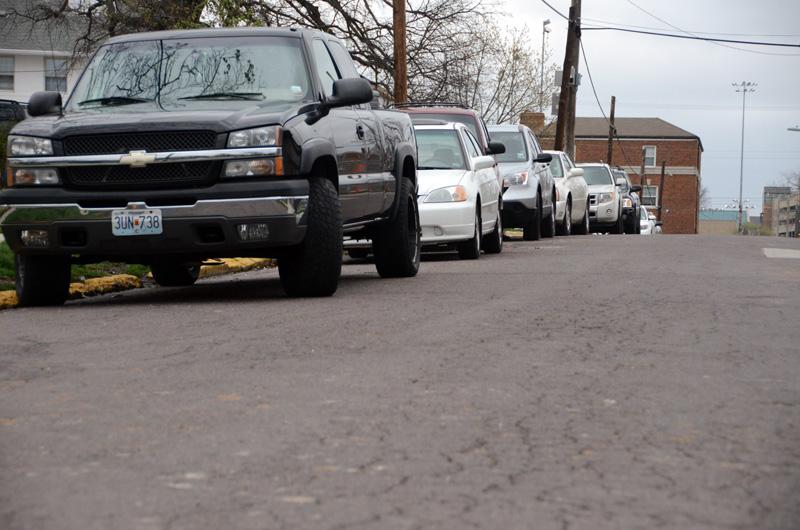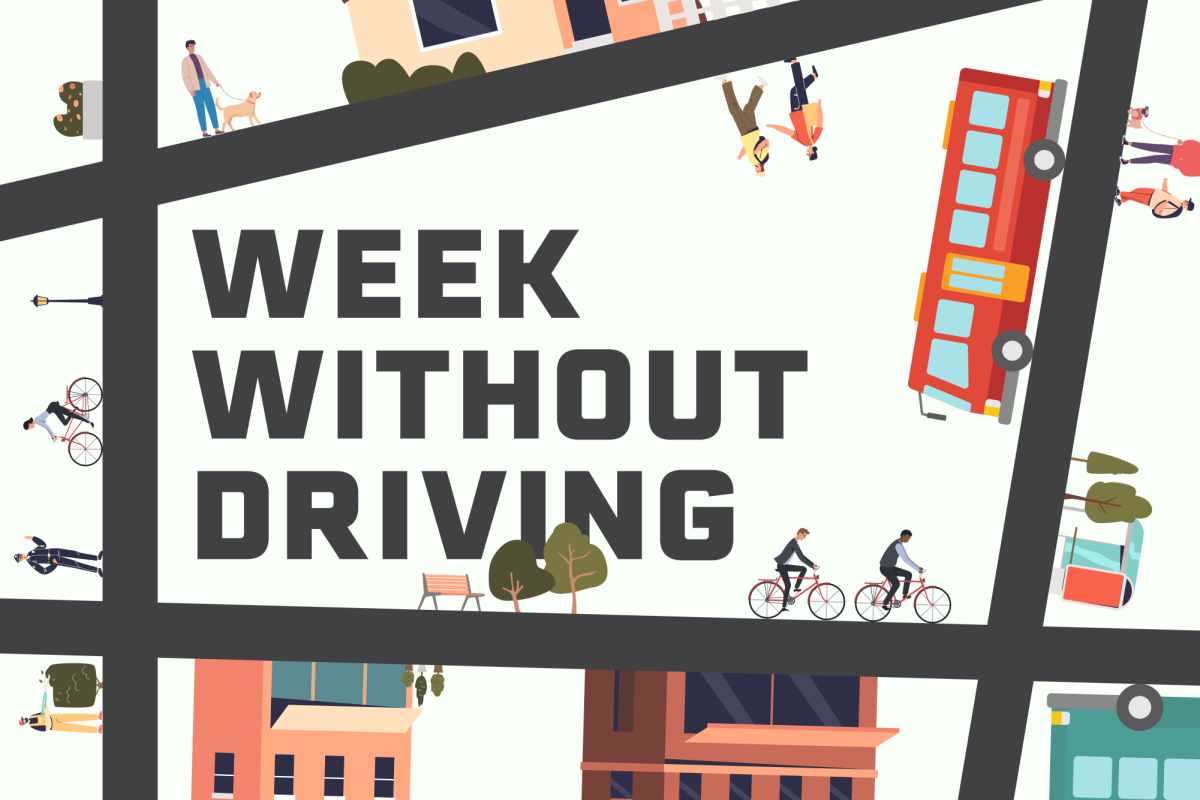City Council members attended a work session Tuesday to discuss options for the Providence Road Improvement Project. From that work session, it seems most council members, with the exception of First Ward Councilman Fred Schmidt, are in favor of rescinding Phase 1 of the plan this Monday, Third Ward Council Member Karl Skala said.
Phase 1 would create a feeder road from the Grasslands subdivision to Providence Road. This plan would involve acquisition and demolition of eight houses along Providence in an effort to alleviate traffic congestion and address pedestrian concerns. During the work session, council reviewed all 10 different options that have been proposed since the project’s inception in 2005.
Phase 1, in conjunction with Phase 2 (which was never actually passed by the council) is now being referred to as option nine. However, most council members seemed to favor option 10, Second Ward Councilman Michal Trapp said.
“I suspect we’ll end up rescinding it and building that right turn lane up Providence to Brandon (Road),” Trapp said. “That way we don’t do anything to change access to the neighborhood. I think we’ll just widen the roads to help traffic flow a little bit more and try to reach a consensus.”
The main problem that most of the council had with the originally passed plan was the construction of the feeder road. An alternative presented to council suggested that Birch Road could serve the same purpose as the feeder road; however, while council favors that idea, that option would likely be unpopular with Grasslands residents, Trapp said.
“I don’t think that that solution is going to work with the Grasslands Neighborhood Association,” Trapp said. “The president of the Grasslands Neighborhood Association, Robbie Price, told me that wouldn’t work because it would have people driving around in their neighborhood more.”
In 2005, $997,500 was budgeted for Providence Road improvements, but the original two-phase plan would have totaled $6.6 million. At the work session, many council members wanted to scale back the scope of the project, Skala said.
Option 10 would total $250,000, according to the Public Works Department.
“The mayor said in one of his metaphors, and I agree with this metaphor, instead of having knee replacement, maybe we should see how long the Motrin or the aspirin works,” Skala said. “I think that’s probably a good way to proceed: to rescind Phase 1, to do as much as possible … before we commit to a $7 million project.”
Newly elected Fourth Ward Councilman Ian Thomas also suggested collecting data on traffic trends in that area and possibly approaching the problem using means other than infrastructure development.
“This is an example of a trend of transportation policy which has only considered people driving their private cars,” Thomas said. “There is an approach for traffic demand management that instead of working at the supply side, works at the demand side. I’d like to know exactly how many cars are trying to get through that intersection in a one-hour period … Where are those people going? Where did they start their journeys? And can we address this problem in a less drastic, less dramatic way?”
Some possible solutions could be expanding public transit and car pool programs or working with businesses to stagger when workers get off shifts, Thomas said.
City Council and city staff have tried to solve traffic congestion on Providence Road for nearly a decade. Since Providence Road is such a main artery for Columbia, improvements to the area can have impacts on a wide range of residents.
“We all travel down Providence whether we walk it, bike it or drive it,” Trapp said. “Anybody who goes anywhere goes down through that intersection.”
Due to the large number of people involved, coming to a consensus isn’t easily done, Trapp said.
Trapp said the original two-phase plan was an act mainly driven by former Fifth Ward Councilwoman Helen Anthony.
“The other reason it’s been hard is that there’s the Grasslands neighborhood, and that’s wealthy, politically connected people who are politically involved and friends of people who make decisions,” Trapp said. “And then there’s the university, which has big, strong interests in how traffic flows, and there’s some powerful fraternities that have money and influence and reach and then there’s (the Missouri Department of Transportation) and the city which has it’s own interests. So to come up with something that all those people agree on is difficult.”
While many stakeholders view the problems in terms of how it would impact them individually, the council tends to look at the issue with a citywide mindset, Trapp said.
“For council, what most of us thought was good in the work session, was probably more representative of the wider stakeholders, you know, citywide,” he said. “It’s in our interest to spend less money. It’s in our interest not to destroy homes.”
At the Feb. 18 City Council meeting, several community members spoke in support or against the plan after the Historic Preservation Commission submitted a report with concerns regarding the legality of the project.
Community members who don’t live in the Grasslands neighborhood gave their opinions on the plan at that meeting.
Columbia resident Jeremy Root does not live in Grasslands, but he believes the Providence Road project is an issue that involves more than just property stakeholders, Root said.
“I think it’s a community issue,” Root said. “It’s not just a Grasslands issue. It’s a city issue. There needs to be a plan in place that addresses traffic concerns while also taking into consideration other views.”
Root agrees with the Historic Preservation Commission that City Council did not follow proper procedure.
Alpha Gamma Sigma Treasurer Marc Rosenbohm spoke against what is now known as option nine and noted that the fraternity believes the plan would negatively affect traffic instead of alleviate it.
“Making Kentucky Boulevard ‘right in, right out’ will only further hinder our ability to turn left on Providence,” Rosenbohm said.
But the more pressing issue the fraternity identified was the lack of outreach by the city to include them in the public process, Rosenbohm said.
“We were completely left out of the meetings,” Rosenbohm said.
Delta Gamma is located at the south corner of Providence and Burnam Road. The MU House Corporation of Delta Gamma was not notified of any meetings about the Providence Road project because they weren’t considered stakeholders. However, the project will impact people beyond those financially invested, said Donna Buchert, a member of the MU House Corporation of Delta Gamma.
Women living in the Delta Gamma house would face limited left turns on Providence Road. Additionally, those residents would no longer be able to park on Richmond Avenue or Burnam, thus leaving nearly 150 cars without parking places. These students would need to find parking somewhere else on campus, yet no city officials informed them of this, Buchert said at a City Council meeting.
“We were not notified of anything because we were not a stakeholder,” Buchert said. “I understand the issue with the residents at the Grasslands, but … we need to let the members of those frats and sororities know that they will not be able to park there. We do have kids that parents count on us to keep them informed. Maybe we aren’t considered a stakeholder, but really we are a stakeholder as we are representatives for several students at the university.”








